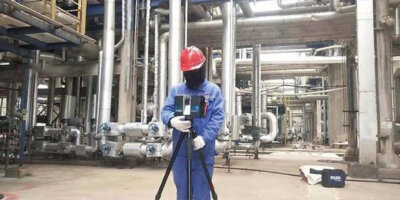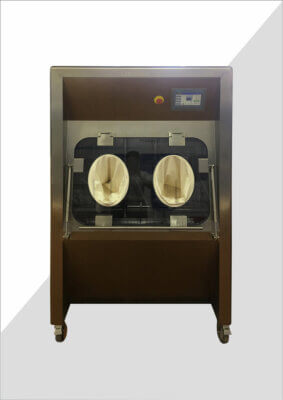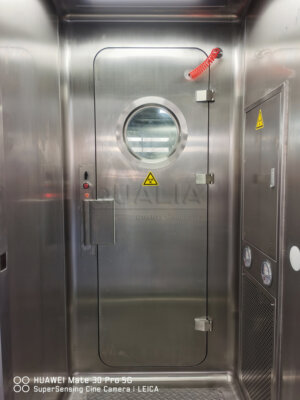In an era of increasing environmental awareness and stringent biosafety regulations, thermal effluent decontamination systems have emerged as a critical technology for managing potentially hazardous liquid waste. These systems play a vital role in protecting public health and the environment by effectively treating contaminated effluents before their release. As industries and research facilities generate more complex and potentially harmful waste streams, the importance of robust decontamination processes cannot be overstated.
The thermal effluent decontamination system is a sophisticated solution designed to neutralize biological and chemical contaminants in liquid waste. By subjecting the effluent to high temperatures, these systems effectively inactivate or destroy harmful microorganisms and break down toxic compounds. This process ensures that the treated waste is safe for disposal or further processing, minimizing the risk of environmental contamination and safeguarding human health.
As we delve deeper into the world of thermal effluent decontamination, we'll explore the various types of systems available, their operating principles, and the critical factors that influence their effectiveness. We'll also examine the regulatory landscape surrounding effluent treatment and the challenges faced by industries in implementing these crucial systems.
"Thermal effluent decontamination systems are essential for maintaining biosafety levels in research facilities and industries dealing with potentially hazardous biological materials. These systems ensure that liquid waste is thoroughly treated before release, significantly reducing the risk of environmental contamination and protecting public health."
| System Type | Operating Temperature | Treatment Time | Capacity |
|---|---|---|---|
| Batch Steam | 121°C – 134°C | 15-30 minutes | 100-5000 L |
| Continuous Flow | 121°C – 134°C | 5-15 minutes | 100-10000 L/hr |
| Thermochemical | 95°C – 105°C | 30-60 minutes | 100-5000 L |
How do thermal effluent decontamination systems work?
Thermal effluent decontamination systems operate on the principle of using heat to neutralize biological and chemical contaminants in liquid waste. These systems typically heat the effluent to temperatures ranging from 121°C to 134°C, which is sufficient to inactivate most microorganisms and denature proteins.
The process begins with the collection of contaminated liquid waste in holding tanks. From there, the effluent is pumped into the treatment chamber, where it is rapidly heated using steam or electrical heating elements. The high temperature is maintained for a specific duration, ensuring that all pathogens and harmful substances are effectively neutralized.
One of the leading providers of advanced thermal effluent decontamination solutions is 'QUALIA'. Their systems are designed to meet the stringent requirements of Biosafety Level 2, 3, and 4 facilities, offering reliable and efficient treatment of liquid waste.
"The effectiveness of thermal effluent decontamination systems lies in their ability to consistently maintain high temperatures throughout the treatment process. This ensures a 6-log reduction in microbial populations, meeting or exceeding regulatory standards for effluent treatment."
| Treatment Phase | Temperature | Duration | Purpose |
|---|---|---|---|
| Heat-up | Ambient to 121°C | 5-10 minutes | Rapid temperature increase |
| Holding | 121°C – 134°C | 15-30 minutes | Microbial inactivation |
| Cool-down | 134°C to <60°C | 10-20 minutes | Safe handling temperature |
What are the different types of thermal effluent decontamination systems?
Thermal effluent decontamination systems come in various configurations to suit different facility needs and waste volumes. The three main types are batch steam systems, continuous flow systems, and thermochemical systems.
Batch steam systems are designed to treat a specific volume of effluent in a single cycle. These systems are ideal for facilities with lower waste volumes or those requiring flexibility in treatment schedules. Continuous flow systems, on the other hand, offer higher throughput and are better suited for facilities with constant waste generation.
Thermochemical systems combine thermal treatment with chemical disinfection, allowing for lower operating temperatures while maintaining high efficacy. This approach can be particularly useful for treating effluents containing heat-sensitive components or in facilities where energy conservation is a priority.
"The choice between batch, continuous flow, and thermochemical systems depends on factors such as waste volume, composition, and facility requirements. Batch systems offer flexibility, continuous flow systems provide higher capacity, and thermochemical systems balance efficiency with energy conservation."
| System Type | Advantages | Disadvantages | Best For |
|---|---|---|---|
| Batch Steam | Flexible, thorough treatment | Lower throughput | Low-volume facilities |
| Continuous Flow | High capacity, efficient | Higher initial cost | High-volume facilities |
| Thermochemical | Lower temperature, energy-efficient | Chemical handling required | Sensitive effluents |
What are the key components of a thermal effluent decontamination system?
A typical thermal effluent decontamination system consists of several crucial components working together to ensure effective treatment. The primary elements include holding tanks, a treatment chamber, heating systems, pumps, and control systems.
Holding tanks serve as temporary storage for contaminated effluent before treatment. The treatment chamber is where the actual decontamination process occurs, typically constructed of corrosion-resistant materials to withstand high temperatures and potentially aggressive chemicals.
The heating system, often steam-based or electric, is responsible for rapidly raising and maintaining the effluent temperature. Pumps and valves control the flow of effluent and steam throughout the system, while advanced control systems monitor and regulate the entire process to ensure consistent and reliable treatment.
"The integration of robust components and sophisticated control systems in thermal effluent decontamination units ensures precise temperature control and treatment consistency. This level of engineering is crucial for maintaining the efficacy and reliability required in high-risk environments such as BSL-3 and BSL-4 laboratories."
| Component | Function | Material | Considerations |
|---|---|---|---|
| Holding Tanks | Effluent storage | Stainless steel | Corrosion resistance |
| Treatment Chamber | Decontamination | High-grade alloys | Pressure and temperature tolerance |
| Heating System | Temperature control | Varies | Energy efficiency |
| Control System | Process management | Electronic | Reliability and redundancy |
How do regulatory standards impact thermal effluent decontamination?
Regulatory standards play a crucial role in shaping the design and operation of thermal effluent decontamination systems. Organizations such as the World Health Organization (WHO), the Centers for Disease Control and Prevention (CDC), and various national environmental agencies set guidelines for the treatment of potentially hazardous liquid waste.
These regulations typically specify minimum temperature and time combinations for effective sterilization, as well as requirements for system validation and monitoring. For example, many standards require a minimum temperature of 121°C to be maintained for at least 15 minutes to ensure complete inactivation of biological contaminants.
Compliance with these standards is not just a legal requirement but also a fundamental aspect of responsible environmental management and public health protection. Facilities must regularly test and validate their decontamination processes to ensure ongoing compliance and effectiveness.
"Adherence to regulatory standards in thermal effluent decontamination is non-negotiable. These standards ensure that treated effluents meet strict safety criteria before release, protecting both the environment and public health from potential biological and chemical hazards."
| Regulatory Body | Standard | Key Requirements |
|---|---|---|
| WHO | Biosafety Manual | 121°C for 15 minutes minimum |
| CDC | BMBL 5th Edition | Validated 6-log reduction |
| EPA | 40 CFR Part 503 | Specific time-temperature relations |
What challenges are associated with implementing thermal effluent decontamination systems?
Implementing thermal effluent decontamination systems comes with several challenges that facilities must address. One of the primary concerns is the high energy consumption associated with heating large volumes of liquid to sterilization temperatures. This can lead to significant operational costs and may conflict with sustainability goals.
Another challenge is the potential for system corrosion due to the combination of high temperatures and potentially aggressive chemicals in the effluent. This necessitates the use of specialized, corrosion-resistant materials, which can increase initial investment costs.
Facilities must also consider the space requirements for these systems, which can be substantial, especially for high-capacity continuous flow units. Additionally, the need for regular maintenance and validation testing to ensure consistent performance can add to the operational complexity.
"The implementation of thermal effluent decontamination systems requires careful planning and ongoing management. While these systems are crucial for biosafety, facilities must balance effectiveness with energy efficiency, space constraints, and maintenance requirements to ensure sustainable long-term operation."
| Challenge | Impact | Mitigation Strategy |
|---|---|---|
| Energy Consumption | High operational costs | Heat recovery systems, insulation |
| Corrosion | Reduced system lifespan | Corrosion-resistant materials, regular inspections |
| Space Requirements | Facility layout constraints | Compact designs, vertical integration |
| Maintenance | Downtime, additional costs | Preventive maintenance, redundant systems |
How is the efficiency of thermal effluent decontamination systems measured?
The efficiency of thermal effluent decontamination systems is primarily measured by their ability to achieve a specified reduction in microbial populations, typically expressed as a log reduction value. A 6-log reduction, which represents a 99.9999% decrease in viable microorganisms, is often the standard benchmark for these systems.
Efficiency is also assessed in terms of energy consumption, throughput, and consistency of treatment. Advanced systems incorporate real-time monitoring of critical parameters such as temperature, pressure, and flow rate to ensure that each batch or continuous flow meets the required treatment standards.
Validation studies, including the use of biological indicators and chemical integrators, are regularly conducted to verify the system's performance. These studies help ensure that the decontamination process remains effective over time and under various operating conditions.
"The true measure of a thermal effluent decontamination system's efficiency lies in its ability to consistently achieve the required microbial reduction while optimizing energy use and throughput. Regular validation using biological indicators is crucial to confirm the system's ongoing effectiveness."
| Efficiency Metric | Target Value | Measurement Method |
|---|---|---|
| Microbial Reduction | 6-log (99.9999%) | Biological indicators |
| Energy Consumption | Facility-specific | kWh per liter treated |
| Treatment Consistency | <1% deviation | Statistical process control |
| Throughput | System-specific | Liters per hour |
What future developments can we expect in thermal effluent decontamination technology?
The field of thermal effluent decontamination is continually evolving, driven by the need for more efficient, sustainable, and adaptable systems. One area of development is the integration of smart technologies and IoT (Internet of Things) capabilities, allowing for more precise control and remote monitoring of decontination processes.
Researchers are also exploring novel heat transfer methods and alternative energy sources to improve energy efficiency. This includes the development of heat recovery systems that can capture and reuse thermal energy from treated effluents, significantly reducing overall energy consumption.
Another promising direction is the development of hybrid systems that combine thermal treatment with other decontamination methods, such as advanced oxidation processes or membrane filtration. These hybrid approaches could offer more comprehensive treatment capabilities, especially for complex or recalcitrant contaminants.
"The future of thermal effluent decontamination lies in smarter, more energy-efficient systems that can adapt to a wider range of contaminants. Integration of AI-driven control systems and hybrid treatment technologies will likely define the next generation of decontamination solutions."
| Future Trend | Potential Impact | Current Development Stage |
|---|---|---|
| IoT Integration | Enhanced monitoring and control | Early adoption |
| Heat Recovery Systems | Reduced energy consumption | Pilot testing |
| Hybrid Technologies | Broader treatment capabilities | Research phase |
| AI-driven Optimization | Improved efficiency and adaptability | Conceptual |
In conclusion, thermal effluent decontamination systems play a critical role in protecting our environment and public health from potentially hazardous biological and chemical contaminants. These sophisticated systems, exemplified by solutions from providers like QUALIA, ensure that liquid waste from research facilities and industries is thoroughly treated before release.
As we've explored, the effectiveness of these systems relies on carefully controlled temperatures, precise engineering, and adherence to stringent regulatory standards. While challenges such as energy consumption and system complexity persist, ongoing technological advancements promise more efficient and adaptable solutions for the future.
The importance of thermal effluent decontamination cannot be overstated in our increasingly complex and interconnected world. As we continue to push the boundaries of scientific research and industrial processes, these systems will remain at the forefront of our efforts to maintain biosafety and environmental integrity. By investing in and continually improving these critical technologies, we safeguard not only our immediate surroundings but also the broader ecosystems upon which we all depend.
External Resources
Effluent Decontamination systems – Belgian Biosafety Server – Comprehensive overview of various effluent decontamination systems, including thermal and thermochemical options.
Effluent decontamination system – Wikipedia – General information on effluent decontamination systems, types, and applications.
ThermoBatch Systems | Effluent Decontamination | PRI BIO – Detailed description of ThermoBatch effluent decontamination systems and their features.
EDS – Effluent Decontamination Systems – Burt Process Equipment – Information on various types of effluent decontamination systems and their applications.
Effluent Decontamination Systems | Biowaste Sterilization | PRI BIO – Overview of different effluent decontamination systems and considerations for selection.
Continuous Flow Effluent Decontamination Systems – Wikipedia – Specific information on continuous flow effluent decontamination systems.
- Batch Steam Effluent Decontamination System – Wikipedia – Details on batch steam effluent decontamination systems and their operation.
Related Contents:
- Continuous Effluent Decontamination: Protecting Our Environment
- Effluent Decontamination: Essential for High-Risk Labs
- Effluent Decontamination Systems for Biosafety Laboratories
- Effluent Decontamination: Safeguarding Our Environment
- Effluent Decontamination Systems: Safeguarding Malaysia’s Environment
- The ACTINI Effluent Decontamination System: Safeguarding Biohazardous Waste
- Decontamination Systems: Safeguarding Health and Environment
- Maintaining a Clean Effluent Filter: Essential Steps
- Water Decontamination: Essential Methods for Clean, Safe Water





























